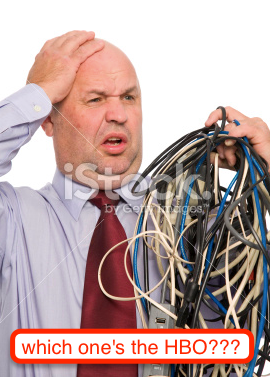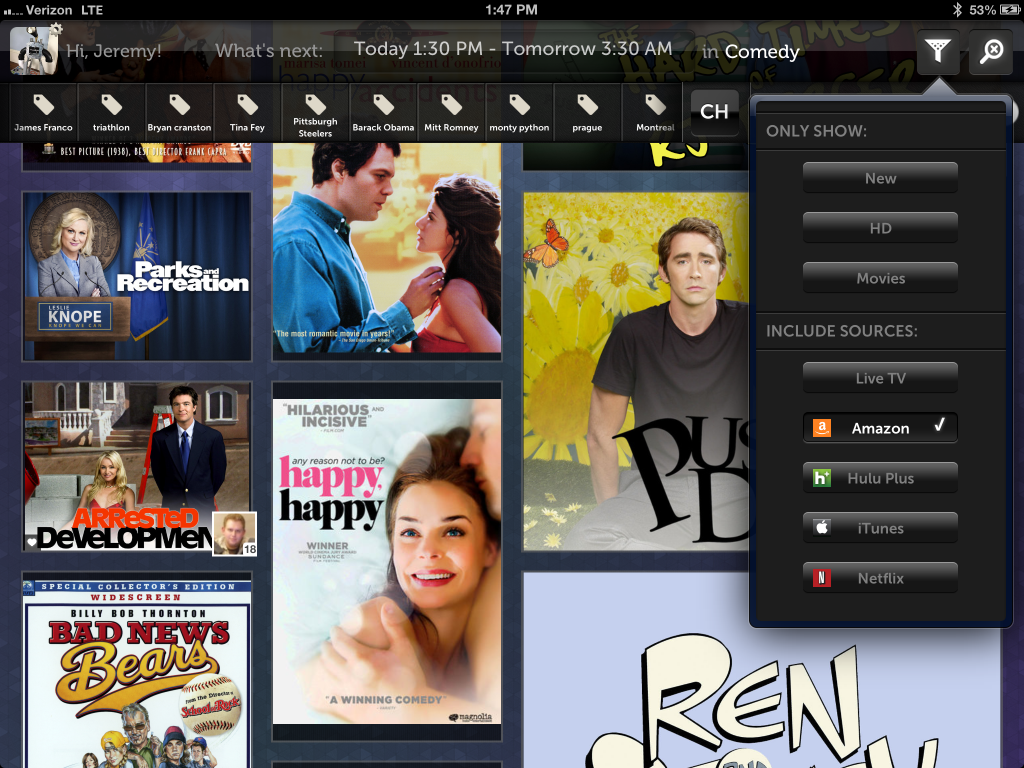 As I asserted in Part 1, I believe we are entering a “fourth generation” of television, one in which the rigid walls that have previously defined the industry are fundamentally disrupted. In the post-1.0 era, not only have consumers lived within “walled gardens” of content, but the industry itself has remained mostly closed to outsiders. When even companies as powerful as Intel and Google have tremendous struggles dealing with Hollywood, gaining access to content, etc, it’s almost comical to think of the startups who tried the same. Aereo’s $96 million in funding became about $1M in auction to TiVo this week.
As I asserted in Part 1, I believe we are entering a “fourth generation” of television, one in which the rigid walls that have previously defined the industry are fundamentally disrupted. In the post-1.0 era, not only have consumers lived within “walled gardens” of content, but the industry itself has remained mostly closed to outsiders. When even companies as powerful as Intel and Google have tremendous struggles dealing with Hollywood, gaining access to content, etc, it’s almost comical to think of the startups who tried the same. Aereo’s $96 million in funding became about $1M in auction to TiVo this week.
This is mostly due to the incredible entanglement of contracts and legal issues pertaining to content ownership, distribution rights, release windows, playback, etc. Heck, even TV-related companies trying to change struggle with the mess. For context: We live in a world today that lets me buy NHL Gamecenter (directly from the NHL) yet not watch my hometown team (Montreal Canadiens, FTW) play “blacked out” games that air on, wait for it, the NHL Network.
The way I’ve always tried to describe the complexity to people is to think of taking a few dozen cables, neatly wound up, then throw em in a backpack and go for a quick jog. Then try to extract a single cable – good luck (for off-topic reading, here’s why that happens).
But we, today, are seeing important catalysts of change, and the catalysts are strong enough to make the powers that be look at how they can un-entangle their own mess. Here are the factors that I believe contribute strongest to a looming shift:
- Netflix, Hulu, SlingTV, HBOGO, and TVE services break down the barriers to making content available through live and near-real-time streaming options. They also “train” content owners to think differently about distribution options.
- iTunes, Google Play, and VOD services enable a la carte alternatives that are truly viable options to many consumers.
- Pervasive 4G access, inexpensive smartphones, and tablets train consumers to demand anything/everything on all devices everywhere and all the time.
- Bittorrent, Popcorn Time, and other piracy options have made finding and accessing high quality content for free far too easy for far too many people.
- YouTube, Vimeo, and the suite of multichannel networks like Fullscreen are providing infinite entertainment alternatives to younger audiences, who may be losing the “attachment” to broadcast-quality television. This should be particularly scary to all sorts of companies – if the zeitgeist of pop culture shifts away from TV, we can expect to see more change, faster, than anyone can predict.
- Cord cutting and dropping TV ratings are at the cusp of causing dramatic impact to advertisers, the unquestionable lifeblood of the industry.
As my colleague Adam Flomembaum, Editor at Lost Remote, shared with me yesterday:
“… we have seen in the last year that control of high quality content is being wrested from the hands of cable and satellite providers. Consumers are becoming increasingly aware of other great options for accessing their favorite content, and TV startups that make this process more seamless – or at the very least, more consumer friendly – have a great chance to thrive.”
 Fundamentally the thing that’s made the TV industry “work” is the requirement and dependency on the two-tiered “middlemen” between content production and audiences. But if the audiences are shifting patterns, quickly, and the producers are able to find new methods of profitable content distribution, change will come. I can’t say it’s a “this year” thing or a “10 years from now” thing – but I do believe we’ve entered the phase wherein there’s industry awareness of changing times, and reactiveness is following.
Fundamentally the thing that’s made the TV industry “work” is the requirement and dependency on the two-tiered “middlemen” between content production and audiences. But if the audiences are shifting patterns, quickly, and the producers are able to find new methods of profitable content distribution, change will come. I can’t say it’s a “this year” thing or a “10 years from now” thing – but I do believe we’ve entered the phase wherein there’s industry awareness of changing times, and reactiveness is following.
I’d also argue that this was not the case over the past decade, and is directly attributable to why so many TV startups crashed and burned. As Eric Elia, Managing Director of Cainkade, puts it:
“The technology has been here for a while, but we’ve been waiting for 10 years for the TV industry dynamics to shift. The table is now set with [hundreds of millions of] streaming devices worldwide, the unbundling boom (HBO, CBS, Sling TV, etc), and a Netflix clone for every taste and geography. It’s going to be a fun few years for tools companies, programmers, ad tech. But I would not want to be a commodity content owner that can’t flap its wings outside the bundle.”
Now with any change we’ll see some mega-corporations begin their slow road to the deadpool, while others seize opportunities. We’ll see startups rise seemingly out of nowhere and become household names. Even five years ago cable and broadcast execs could easily keep their eyes on the distant horizon fearlessly – today, they’re building survival plans.
Next up: defining “TV 4.0”, identifying short-to-long-term opportunities, and other thoughts on why I think it’s a great time to be riding the wave of change in television.





